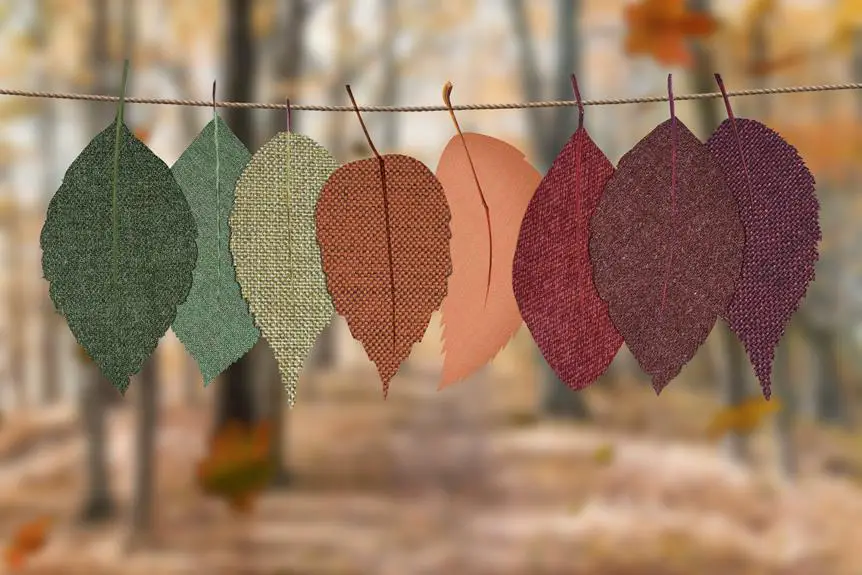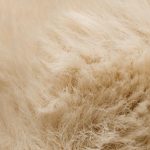Did you know the importance of interlining in fabrics?
Understanding how interlining enhances the quality and performance of textiles is essential for anyone seeking mastery in the world of fabrics.
From improving the drape and structure of garments to enhancing the durability and insulation of home textiles, interlining plays a crucial role in textile production.
This short guide will delve into the basics of interlining, the different types of materials used, the benefits it offers in garments, and the techniques involved in its application.
Whether you're a fashion enthusiast or a textile connoisseur, grasping the significance of interlining will undoubtedly elevate your understanding of fabric construction and manipulation.
Key Takeaways
- Interlining provides support, shape, and stability to fabrics.
- Interlining improves the overall appearance and performance of garments.
- Different types of interlining materials cater to specific applications and fabric types.
- Interlining has various benefits such as adding volume and support, enhancing fabric drape, and maintaining the shape and structure of garments over time.
The Basics of Interlining
Did you know that interlining is a crucial element in enhancing the structure and drape of fabrics? The purpose of interlining is to provide support, shape, and stability to various types of fabrics. It's commonly used in garments such as suits, dresses, and curtains to improve their overall appearance and performance.
Interlining has a wide range of applications in the textile industry. It can be used to add body and fullness to lightweight fabrics, prevent stretching or distortion, and provide insulation. Additionally, interlining can enhance the opacity of sheer fabrics, improve the crease resistance of garments, and contribute to the overall durability of the fabric.
Understanding the different types of interlining and their applications is essential for mastering the art of fabric manipulation. Whether you're a fashion designer, tailor, or home decorator, knowing how to select the right interlining for your project is crucial. Different interlining materials, such as woven, non-woven, and knit interfacings, offer unique benefits and are suitable for specific applications.
Types of Interlining Materials
The next step in understanding interlining is to explore the various types of interlining materials and their specific applications in enhancing fabric structure and drape.
Interlining materials come in different forms, each designed to serve specific purposes. Woven interlinings, made of tightly woven fabric, are known for their stability and are often used in men's suits and structured garments.
Non-woven interlinings, on the other hand, are made of synthetic fibers and are versatile, offering both support and flexibility. They're commonly used in lightweight and soft fabrics like chiffon and silk.
Knit interlinings, with their stretch and recovery properties, are ideal for stretch fabrics and garments that require ease of movement.
Fusible interlinings have a heat-activated adhesive on one side, enabling them to bond to the fabric when heat is applied, making them convenient for quick and easy application.
Finally, there are specialty interlinings designed for specific applications such as waterproof interlinings for outerwear and thermal interlinings for cold-weather garments.
Understanding the different interlining materials empowers you to make informed choices when enhancing the structure and drape of your fabrics.
Benefits of Interlining in Garments
As you consider the benefits of interlining in garments, it's important to understand how different types of interlining materials can impact the overall structure and drape of the fabric. Interlining offers numerous advantages in the construction of garments. It enhances the performance of fabrics by adding volume, shape, and support, ultimately improving the garment's appearance and longevity. Interlining also provides excellent application in various types of clothing, from formal wear to outerwear, allowing for a tailored and polished look.
The impact of interlining on garment performance is significant. By incorporating interlining, you can achieve a more professional finish, as it helps to maintain the shape and structure of the garment over time. Additionally, interlining can improve the insulating properties of the fabric, making it suitable for different weather conditions. It also enhances the drape of the fabric, ensuring that the garment falls gracefully on the body.
Understanding the benefits of interlining in garments allows for the utilization of the right materials to achieve the desired performance and appearance. Whether it's for shaping, support, or enhancing the overall look, interlining plays a crucial role in garment construction.
Interlining Techniques in Textile Production
When using interlining techniques in textile production, you can achieve enhanced fabric performance and structure through various methods. Interlining applications play a crucial role in improving the overall quality of the fabric.
Here are some interlining methods commonly used in textile production:
- Fusible Interfacing: This method involves applying heat to a layer of adhesive on the interlining, which when cooled, bonds the interlining to the fabric. It's a popular method due to its efficiency and ease of application.
- Sewing Interfacing: In this method, the interlining is attached to the fabric using stitching. It provides durability and flexibility, making it suitable for a wide range of fabrics and garments.
- Knit Interlining: This technique involves using knitted interlining materials, which provide elasticity and comfort to the fabric. It's often used in sportswear and activewear due to its flexibility.
- Non-Woven Interlining: This method involves bonding fibers together to create the interlining. It offers stability and shape retention to the fabric, making it suitable for structured garments.
Understanding these interlining methods allows you to choose the most suitable technique for your specific fabric and garment requirements.
Interlining in Home Textiles
Did you know how interlining can significantly enhance the performance and durability of your home textiles?
Interlining applications in home textiles are vast, ranging from curtains and draperies to upholstery and bedding. By incorporating interlining, these textiles can achieve improved thermal insulation, light control, and noise reduction.
For instance, interlining curtains with a thick, insulating material can help regulate room temperature and reduce energy costs. Additionally, interlining innovations have led to the development of flame-retardant interlining materials, making home textiles safer.
In bedding, interlining can provide extra padding, enhancing the comfort and luxury of quilts and comforters. Moreover, interlining upholstery fabrics can extend their lifespan by providing additional support and structure, preventing wrinkles and sagging.
With these advancements in interlining technologies, home textiles not only offer aesthetic appeal but also cater to the practical needs of modern living, ensuring that your home is both stylish and functional.
Frequently Asked Questions
How Does Interlining Affect the Cost of Fabric and Garment Production?
Interlining significantly impacts fabric and garment production costs. By providing structure and support, it enhances efficiency, reducing the need for excessive fabric and labor. This results in a cost-effective and streamlined production process.
Are There Any Environmental Impacts Associated With the Use of Interlining in Textiles?
When it comes to environmental sustainability, using interlining in textiles can have impacts. However, there are alternatives to traditional interlining that are more eco-friendly, such as recycled materials or organic fibers.
Can Interlining Be Used to Alter the Drape or Hand of a Fabric?
Yes, interlining can alter the drape and hand of a fabric. It enhances the fabric's body and drape, making it suitable for various garments. However, interlining cost and environmental impact should be considered in the decision-making process.
What Are Some Common Challenges or Drawbacks Associated With Using Interlining in Garment Construction?
Using interlining in garment construction presents challenges such as achieving the right balance of stiffness and drape. Solutions include experimenting with different interlining weights and exploring alternative construction methods to minimize drawbacks.
Are There Any Specific Care Instructions for Textiles or Garments That Have Been Interlined?
To maintain textiles or garments with interlining, follow care instructions and maintenance tips. Check labels for specific directions, typically recommending gentle washing, avoiding high heat, and using a garment bag. Regularly inspect for any signs of wear or tear.
- How Does Ring Spun Cotton Affect Garment Fit and Shape Retention? - August 13, 2024
- What Are the Challenges in Producing Ring Spun Cotton? - August 13, 2024
- Is Ring Spun Cotton Suitable for Plus-Size Clothing? - August 13, 2024





